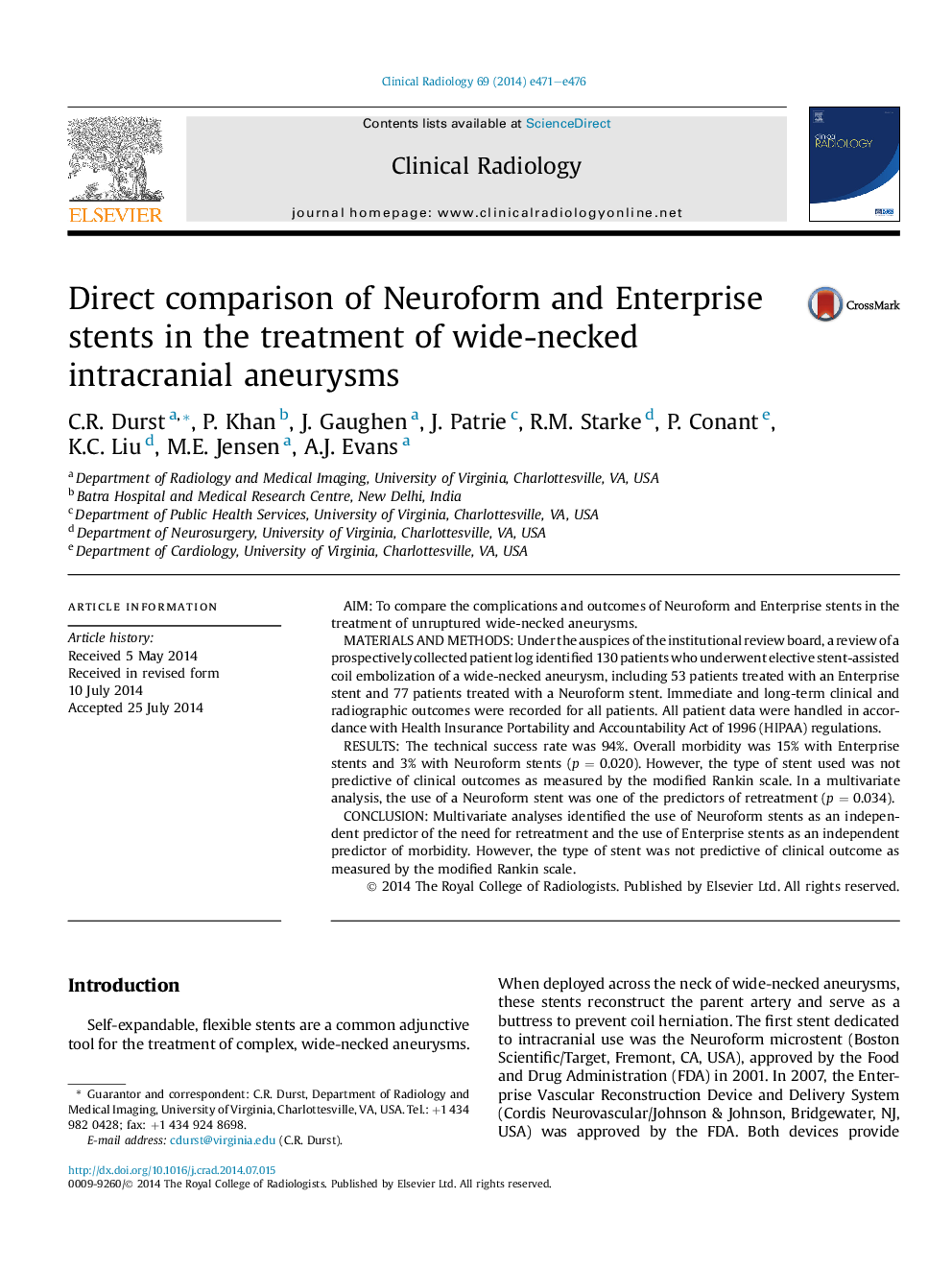| Article ID | Journal | Published Year | Pages | File Type |
|---|---|---|---|---|
| 3981657 | Clinical Radiology | 2014 | 6 Pages |
•The use of Enterprise stents was an independent predictor of morbidity.•The use of Neuroform stents was an independent predictor for retreatment.•The type of stent was not predictive of clinical outcome as measured by the mRS.
AimTo compare the complications and outcomes of Neuroform and Enterprise stents in the treatment of unruptured wide-necked aneurysms.Materials and methodsUnder the auspices of the institutional review board, a review of a prospectively collected patient log identified 130 patients who underwent elective stent-assisted coil embolization of a wide-necked aneurysm, including 53 patients treated with an Enterprise stent and 77 patients treated with a Neuroform stent. Immediate and long-term clinical and radiographic outcomes were recorded for all patients. All patient data were handled in accordance with Health Insurance Portability and Accountability Act of 1996 (HIPAA) regulations.ResultsThe technical success rate was 94%. Overall morbidity was 15% with Enterprise stents and 3% with Neuroform stents (p = 0.020). However, the type of stent used was not predictive of clinical outcomes as measured by the modified Rankin scale. In a multivariate analysis, the use of a Neuroform stent was one of the predictors of retreatment (p = 0.034).ConclusionMultivariate analyses identified the use of Neuroform stents as an independent predictor of the need for retreatment and the use of Enterprise stents as an independent predictor of morbidity. However, the type of stent was not predictive of clinical outcome as measured by the modified Rankin scale.
